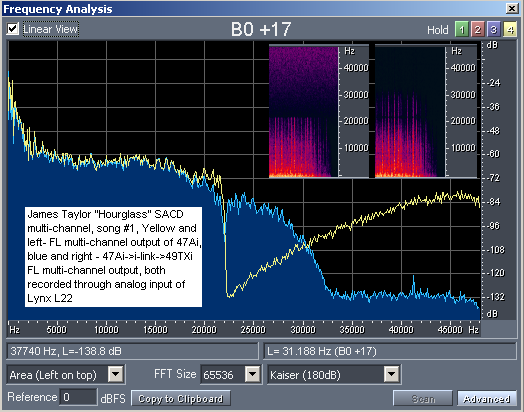bigshot
Headphoneus Supremus
Quote:
Many CDs sound different than the CD. But that doesn't mean that the format sounds different. The differences are due to remixing and remastering for SACD release. Instead of comparing a legacy analogue title, where mastering can make a huge difference, try a high bitrate digital recording and compare the redbook layer to the SACD layer. You'll need to rip the CD layer and level match it in a separate player. SACD players don't A/B very well.
See ya
Steve
| Originally Posted by earwicker7 /img/forum/go_quote.gif I don't know, guys... to me, there is an obvious difference. |
Many CDs sound different than the CD. But that doesn't mean that the format sounds different. The differences are due to remixing and remastering for SACD release. Instead of comparing a legacy analogue title, where mastering can make a huge difference, try a high bitrate digital recording and compare the redbook layer to the SACD layer. You'll need to rip the CD layer and level match it in a separate player. SACD players don't A/B very well.
See ya
Steve







